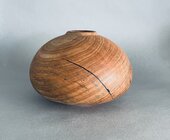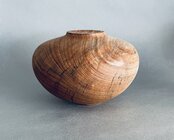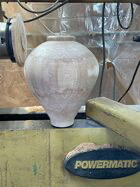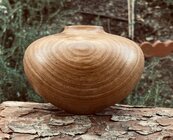There are so many aspects to creation with this art—form, hollowing, sanding, finishing—but form takes precedent. I recently turned this small (5 3/4 inch diameter) ash hollow form and then by serendipity looked at it upside down—much better! Upside down it looks refined and classic but the way I turned it looks “saggy,” sort of like what’s happening to me in old age! I’ll have to work on my hollow form form!





